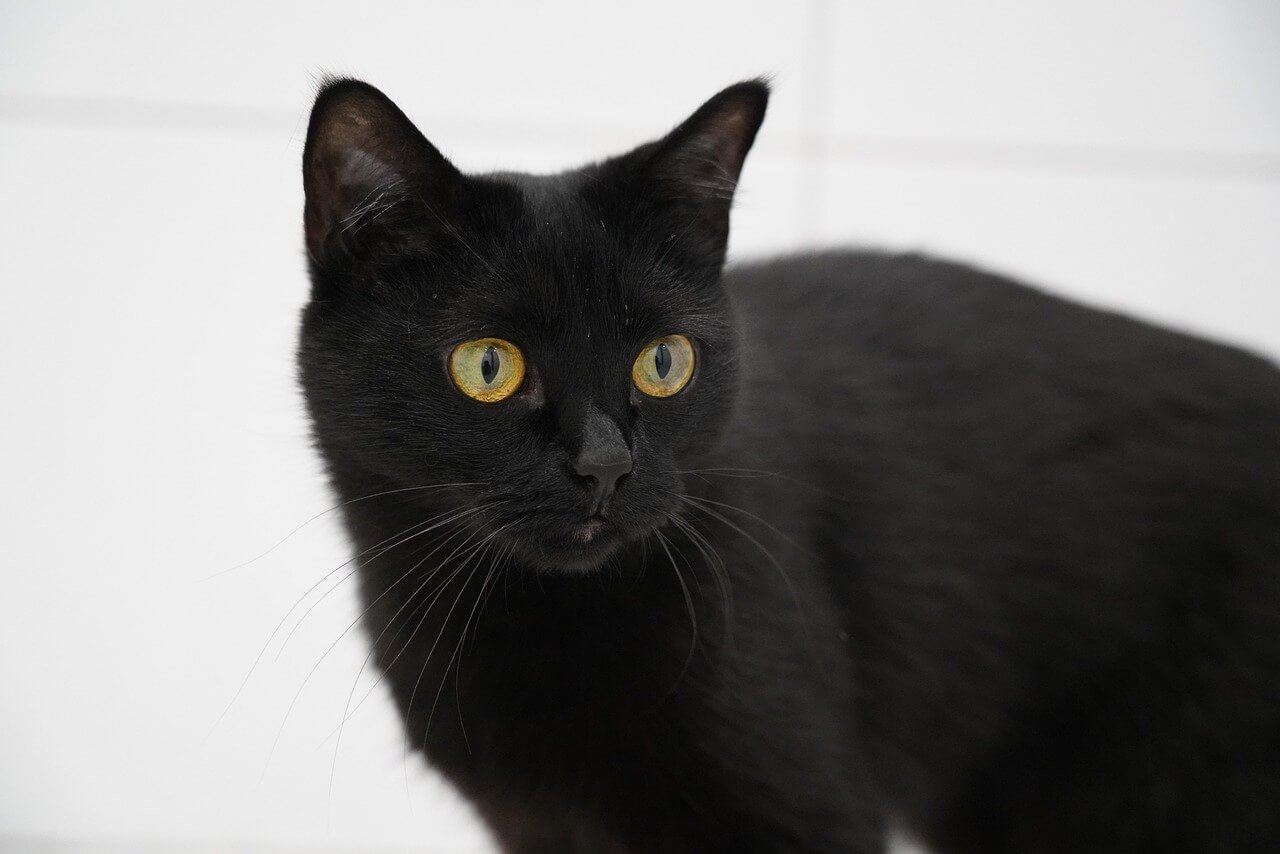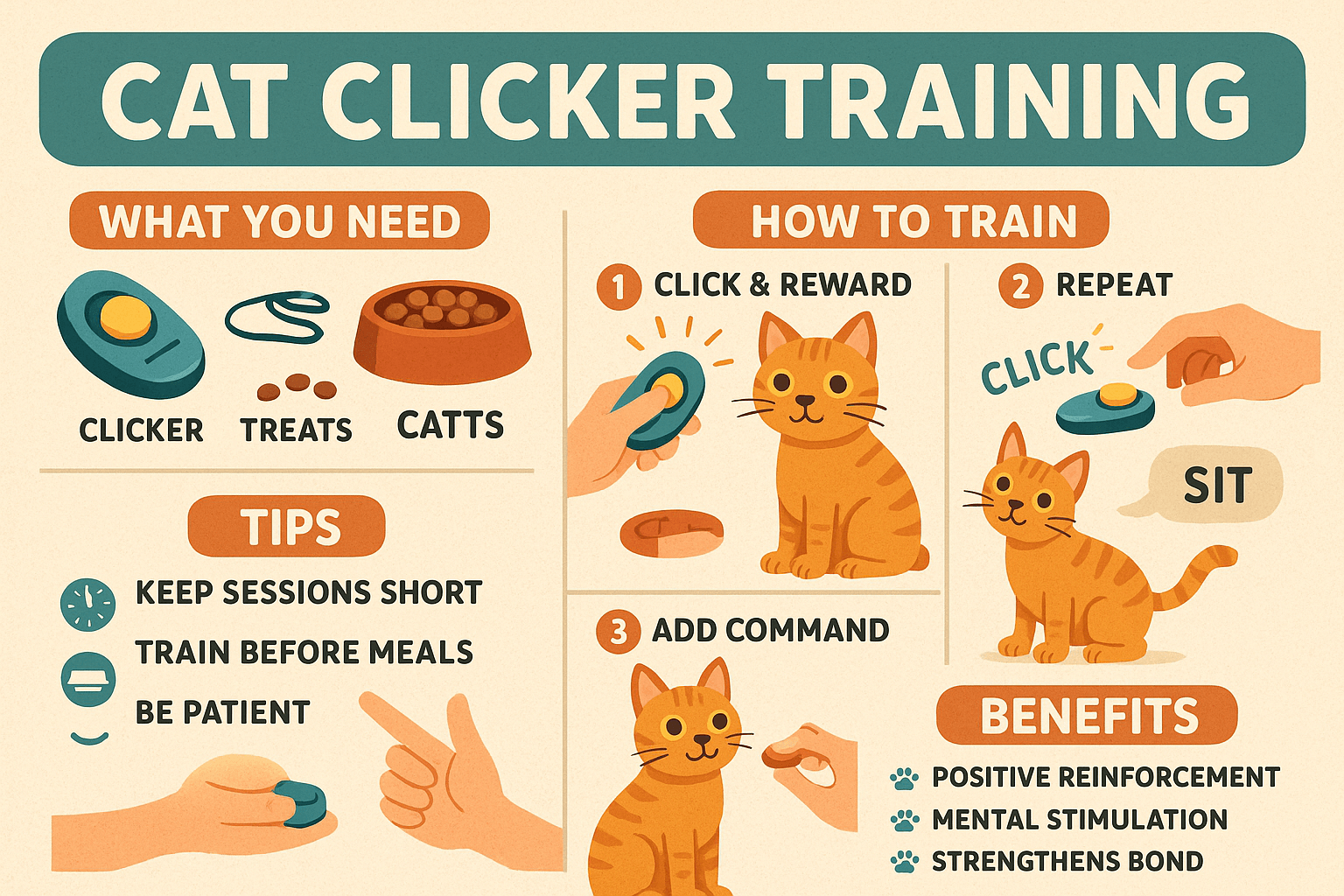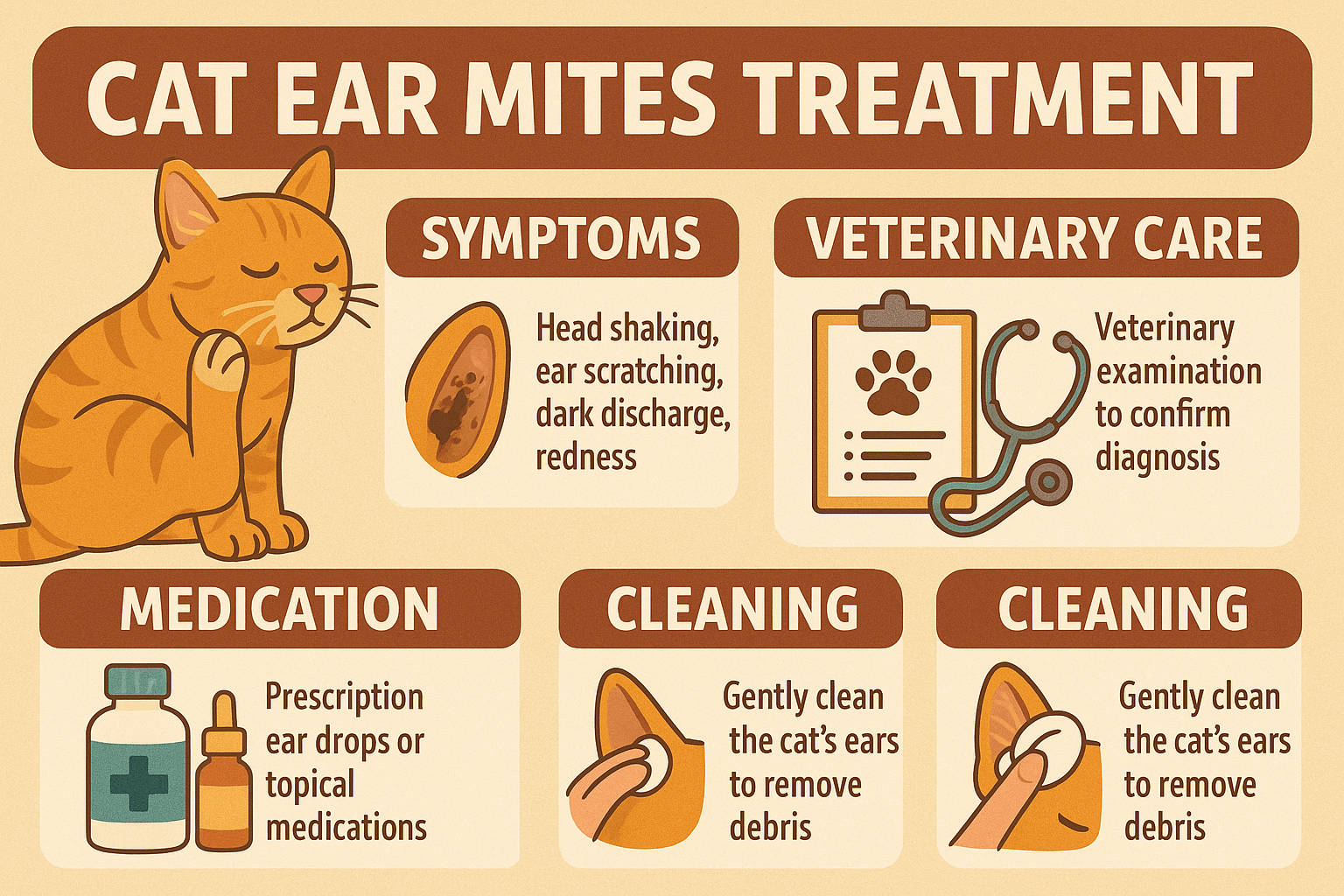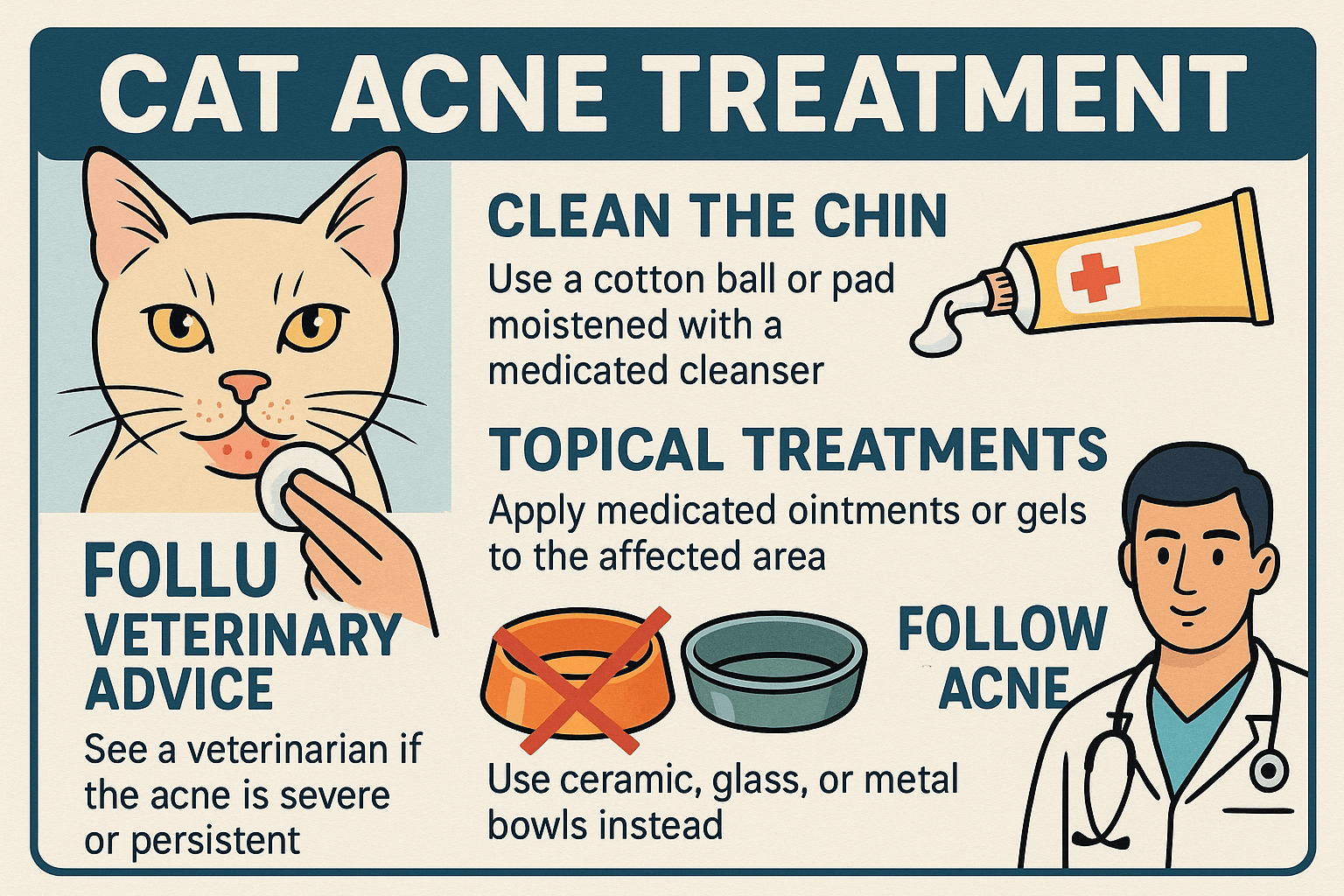Cat Acne on Nose: Causes, Symptoms, and Treatment
If you’ve noticed small black spots or crusty patches on your cat’s nose, you might be dealing with a condition known as cat acne. While the term “acne” may sound strange when applied to our feline friends, it’s actually a common skin issue that affects cats of all ages and breeds. Cat acne typically appears around the chin, lips, or nose, with the nose being a frequent hotspot. Though not usually serious, untreated acne can lead to discomfort or even infections.
In this article, we’ll explore what causes cat acne on the nose, how to identify it, and the best ways to treat and prevent it. By understanding this condition, you can help your furry companion stay happy, healthy, and comfortable.
Understanding Cat Acne: More Than Just Black Spots
Cat acne is a dermatological condition caused by blocked hair follicles and oil glands. It can manifest as blackheads, red bumps, or scabs, often appearing on the nose, chin, or around the mouth. While it’s not life-threatening, it can cause irritation and discomfort for your cat if left untreated. Here are some key points to help you understand this condition better:
Blocked Pores :
Excess oil and debris can clog pores, leading to blackheads or pimples.Bacterial Infections :
If the acne becomes inflamed, bacteria can cause secondary infections.Chin Rubbing Behavior :
Cats who frequently rub their chins on surfaces may irritate their skin, worsening acne.Allergies or Diet :
Certain foods or environmental allergens can contribute to oily skin and acne flare-ups.Stress or Hormonal Changes :
Stress or hormonal imbalances may trigger or exacerbate acne in cats.
Understanding the root causes of cat acne is essential for effective treatment and prevention. With proper care, most cases can be managed successfully.
How to Spot Cat Acne on Your Feline’s Nose
Identifying cat acne early can prevent complications and ensure your cat remains comfortable. The symptoms are often visible but can sometimes be mistaken for dirt or other skin issues. Here’s what to look for:
Blackheads or Specks :
Small black dots resembling dirt may appear on the nose or surrounding areas.Redness or Swelling :
Inflamed skin around the affected area could indicate an infection.Crusty Scabs :
Dried discharge or scabs may form if the acne becomes irritated.Excessive Scratching or Rubbing :
Cats may scratch or rub their noses to relieve itchiness or discomfort.Hair Loss Around the Nose :
Persistent rubbing can lead to patchy fur or bald spots near the nose.
If you notice any of these signs, it’s important to address the issue promptly. Early intervention can prevent the condition from worsening and ensure your cat stays comfortable.
Check this guide 👉Understanding Cat Nose Scabs: Best 7 Health Tips!
Check this guide 👉Why Is My Cats Nose Dripping? Best 7 Health Tips!
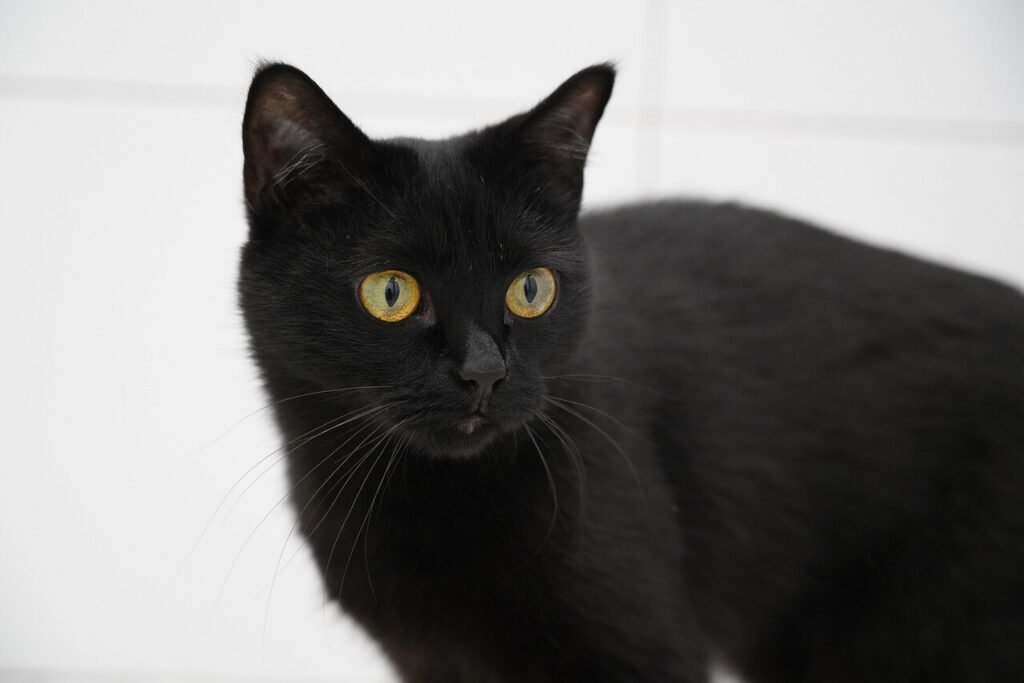
Causes of Cat Acne | Prevention Tips |
|---|---|
Blocked hair follicles and oil glands | Regularly clean your cat’s food and water bowls |
Bacterial infections | Use stainless steel or ceramic feeding dishes |
Allergies or dietary issues | Provide a balanced diet tailored to your cat’s needs |
Stress or hormonal changes | Minimize stressors like loud noises or sudden changes |
Poor grooming habits | Gently wipe your cat’s face with a damp cloth weekly |
Effective Ways to Treat Cat Acne on the Nose
Once you’ve identified cat acne, it’s time to take action. Treatment options vary depending on the severity of the condition, but most cases can be managed at home with proper care. Here are some steps you can take:
Cleanse Gently :
Use a pet-safe antiseptic wipe or diluted chlorhexidine solution to clean the affected area daily.Apply Topical Treatments :
Over-the-counter ointments designed for pets can reduce inflammation and clear up acne.Switch to Better Bowls :
Replace plastic bowls with stainless steel or ceramic ones to reduce bacterial buildup.Monitor Diet :
Consider switching to hypoallergenic or high-quality cat food if dietary issues are suspected.Consult a Veterinarian :
For persistent or severe cases, seek professional advice to rule out underlying conditions.
With consistent care and attention, most cats recover fully from acne without long-term complications. Always prioritize gentle, pet-safe treatments to avoid further irritation.
Tips to Keep Your Cat’s Skin Healthy and Acne-Free
Prevention is key to avoiding recurring bouts of cat acne. By adopting good hygiene practices and making a few lifestyle adjustments, you can significantly reduce the risk of future outbreaks. Here are some preventive measures:
Regular Cleaning :
Wipe your cat’s face gently with a damp cloth once a week to remove excess oil and debris.Proper Grooming :
Brush your cat regularly to distribute natural oils and prevent clogged pores.Avoid Plastic :
Plastic feeding dishes harbor bacteria; opt for non-porous materials instead.Maintain a Balanced Diet :
Ensure your cat’s diet includes essential fatty acids to promote healthy skin.Reduce Stress :
Create a calm environment to minimize stress-related skin issues.
By incorporating these habits into your routine, you can help keep your cat’s skin clear and healthy. Prevention is always easier than treating flare-ups, so consistency is crucial.
Debunking Myths: What You Need to Know About Cat Acne
There are several misconceptions about cat acne that can lead to confusion or improper care. Understanding the truth behind these myths ensures you provide the best possible treatment for your feline friend. Here are some common misunderstandings and the facts to clarify them:
Myth: Cat acne only affects dirty cats :
Fact: Even well-groomed cats can develop acne due to factors like genetics or diet.Myth: It’s just dirt, not acne :
Fact: Blackheads on the nose are a sign of clogged pores, not surface dirt.Myth: Cat acne is painful :
Fact: Mild cases are usually painless, though severe acne can cause discomfort or infection.Myth: Only older cats get acne :
Fact: Cats of all ages can develop acne, though it’s more common in adults.Myth: It will clear up without intervention :
Fact: While mild cases may improve, untreated acne can worsen or become chronic.
By separating fact from fiction, you can approach cat acne with confidence and ensure your pet receives appropriate care.
Natural Solutions: Safe Home Remedies for Your Cat’s Acne
For mild cases of cat acne, home remedies can be effective in soothing irritated skin and preventing further outbreaks. However, always consult your vet before trying new treatments to ensure they’re safe for your cat. Here are some gentle options to consider:
Saline Solution :
A diluted saline solution can cleanse the affected area without irritating the skin.Coconut Oil (Pet-Safe) :
Applied sparingly, coconut oil may help moisturize dry skin and reduce inflammation.Witch Hazel :
This natural astringent can gently clean and disinfect the affected area.Warm Compresses :
Applying a warm, damp cloth can soften scabs and encourage drainage of blocked pores.Apple Cider Vinegar (Diluted) :
A diluted mix of apple cider vinegar and water can act as a mild antiseptic.
While home remedies can be helpful, they should never replace professional advice if the condition persists or worsens. Always prioritize your cat’s safety and comfort.
Recognizing the Signs: When to Take Your Cat to the Vet
While many cases of cat acne are mild and manageable at home, some situations require professional attention. Knowing when to seek veterinary care ensures your cat receives timely treatment and avoids complications. Here are signs that indicate a trip to the vet is necessary:
Persistent Symptoms :
If the acne doesn’t improve after two weeks of home care, it’s time to consult a vet.Severe Redness or Swelling :
Significant inflammation could signal an infection requiring antibiotics.Oozing or Bleeding :
Discharge or open sores suggest a more serious underlying issue.Behavioral Changes :
If your cat seems unusually lethargic or refuses to eat, it could indicate discomfort or illness.Unexplained Hair Loss :
Bald patches around the nose or chin may point to an allergic reaction or other condition.
Prompt veterinary attention can prevent minor issues from escalating into major problems. Trust your instincts—if something feels off, it’s better to err on the side of caution.
Frequently Asked Questions About Cat Acne
Is cat acne contagious?
No, cat acne is not contagious and cannot spread to other pets or humans.
Can I use human acne products on my cat?
No, human products can irritate your cat’s sensitive skin; always use pet-safe treatments.
Will cat acne go away on its own?
Mild cases may resolve naturally, but persistent or severe acne requires treatment.
How often should I clean my cat’s face?
Once a week is sufficient unless your vet recommends more frequent cleaning.
Can allergies cause cat acne?
Yes, food or environmental allergies can contribute to oily skin and acne development.
Final Thoughts: Keeping Your Cat’s Nose Clear and Healthy
Cat acne on the nose might seem unusual, but it’s a manageable condition with the right approach. By recognizing the symptoms early, addressing the underlying causes, and maintaining good hygiene practices, you can help your cat stay comfortable and acne-free. Remember, prevention is always better than cure—regular cleaning, proper nutrition, and stress reduction play vital roles in keeping your feline’s skin in top shape. If you’re ever unsure about your cat’s condition, don’t hesitate to consult a veterinarian for personalized advice. With your love and care, your cat’s nose—and overall well-being—will remain as charming as ever.
Cat Clicker Training: Best 7 Expert Tips! Discover how to train your cat using clicker techniques, improve behavior, and strengthen your bond with simple, effective strategies.
Lorem ipsum dolor sit amet, consectetur adipiscing elit. Ut elit tellus, luctus nec ullamcorper mattis, pulvinar dapibus leo.
Cat Ear Mites Treatment: Best 7 Expert Tips! Discover effective solutions to treat and prevent ear mites in cats, ensuring your pet's comfort and health with expert advice.
Cat Acne Treatment: Best 7 Expert Tips! Discover effective remedies, prevention strategies, and expert advice to treat and manage feline acne for a healthier, happier cat.

